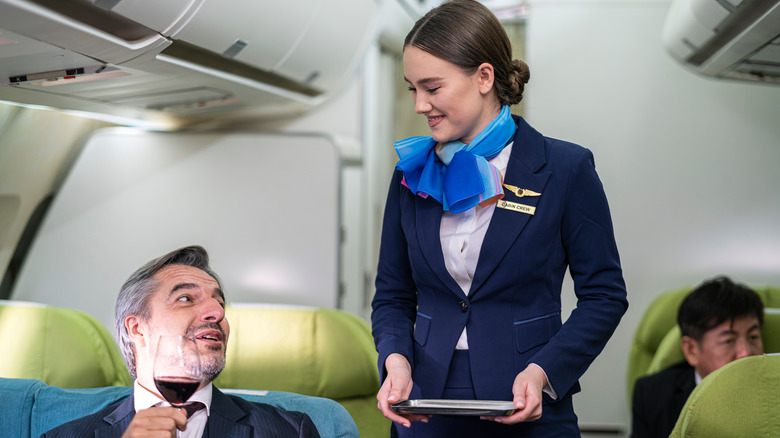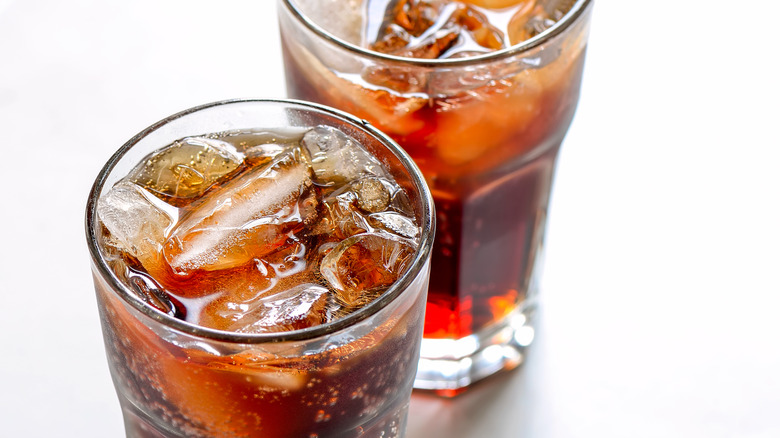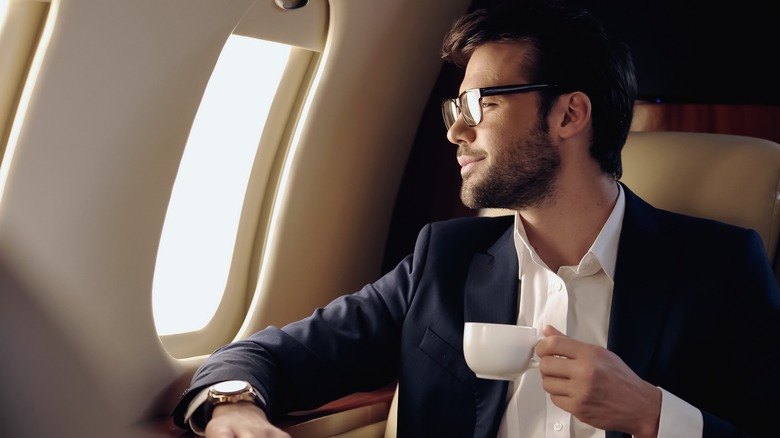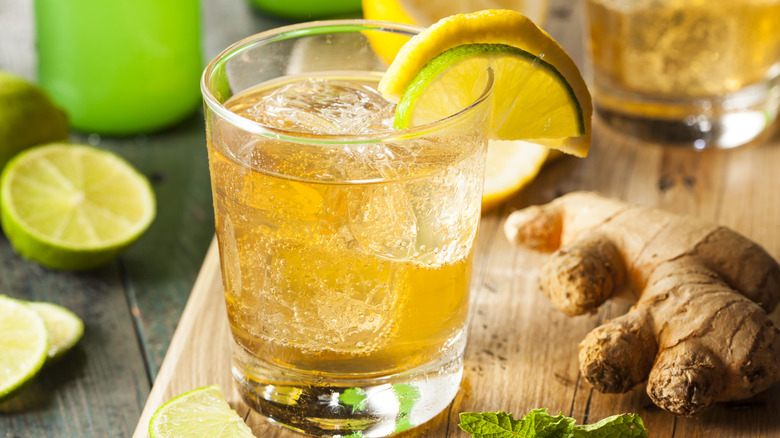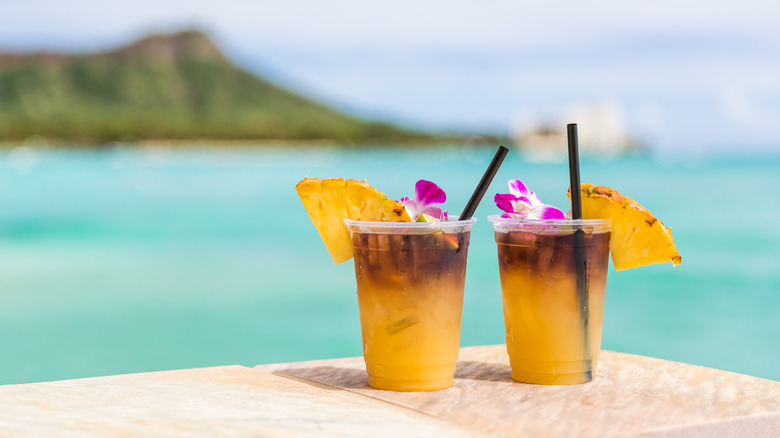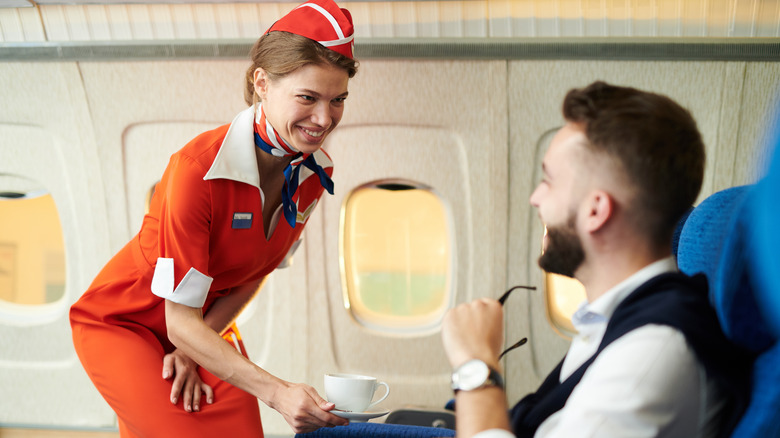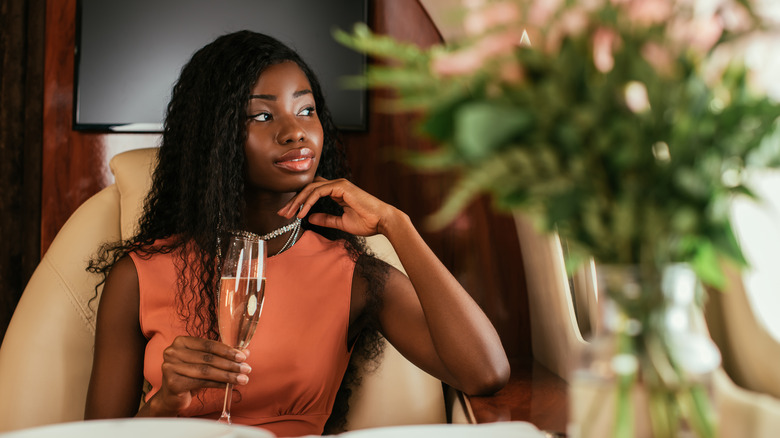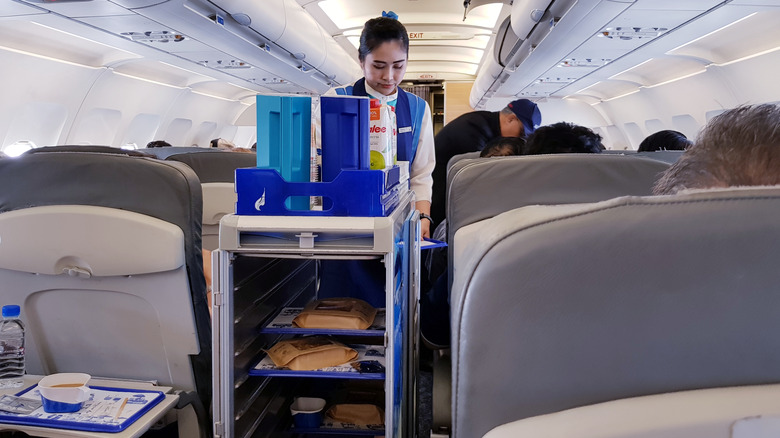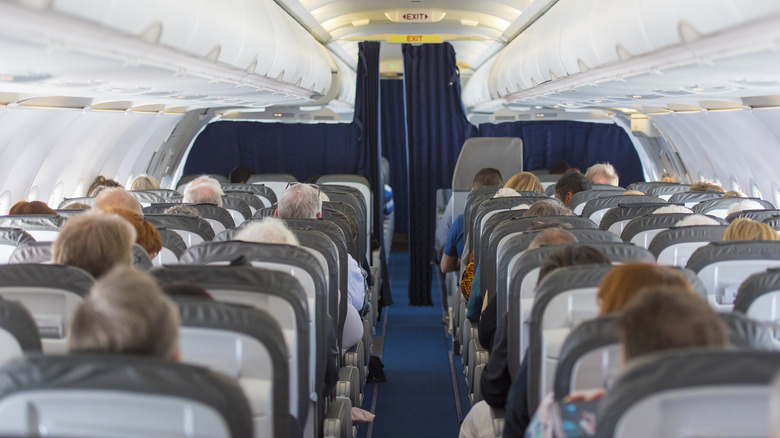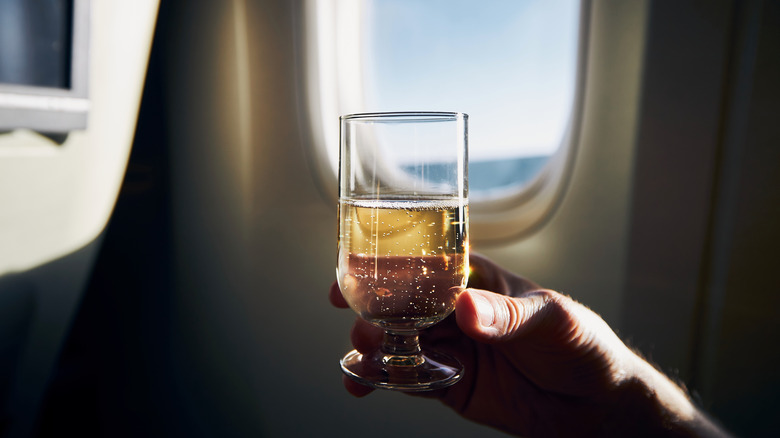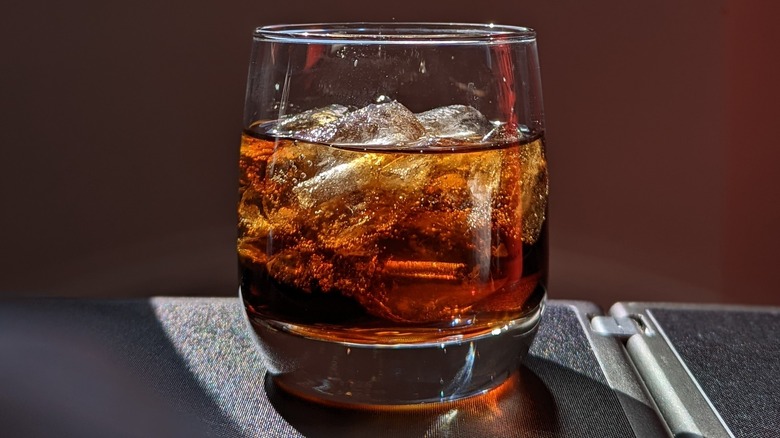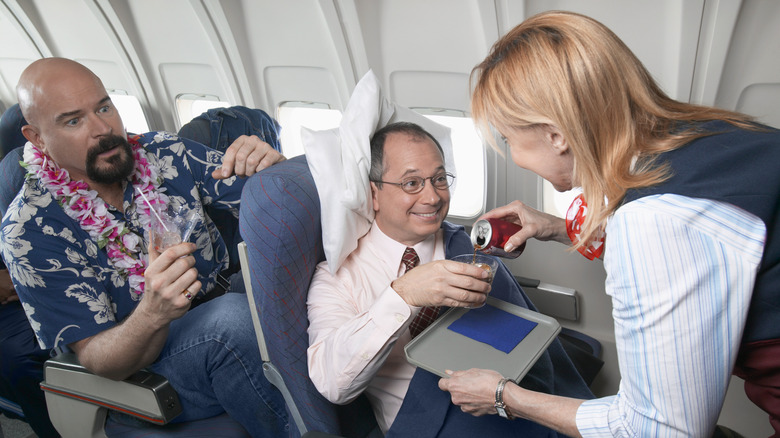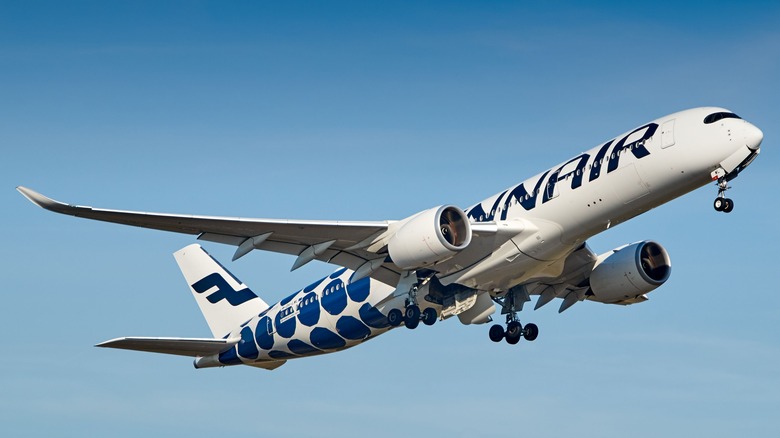Insider Hacks And Little-Known Facts: 12 Secrets Of Inflight Beverage Service
Even before the COVID-19 pandemic, food and beverage service on airplanes was already changing. The kinds of products offered have changed drastically through the years and continue to differ -– especially between the different flight classes. While a lot of things have changed, there are still some tips and tricks to making the most of your in-flight beverage experience.
For instance, many airlines have pivoted to charge-only service with the preference to charge you automatically through the payment method attached to your account. This limits the amount of back and forth between passengers and flight attendants, making the process of ordering as germ-free and streamlined as possible.
Beyond that, many of the changes airlines are making are also environmentally friendly and community-based initiatives. For example, some airlines are relying on local brands for their food or beverage offerings and working toward being more sustainable where possible. These changes signal more shifts in how inflight beverage service is handled. Let's dive into some of the secrets of the trade and discuss the tips, tricks, and little-known tidbits that have stayed true with beverage service, despite all of these changes. From expensive champagne and specially-made cocktails to safety briefings and germ-filled surfaces, here's what you didn't know you needed to know about inflight beverage services.
Flight attendants hate serving Diet Coke
It's no secret that the air cabin pressure in a plane changes things, exemplified by how our ears pop as the plane climbs into the sky. That pressure affects other things similarly, especially carbonated beverages. The cabin pressure increases twhe pressure in soda cans, especially for one beverage in particular — Diet Coke. This is the one beverage that takes the longest to serve because the flight attendant has to wait for the carbonation to die down before finishing the pour into a cup.
Dealing with the Diet Coke fizz is especially frustrating for flight attendants doing beverage service on a short flight. In some cases, it can feel like beverage service happens and when the cart reaches the end of the economy cabin, the pilot is already announcing the plane's descent. Some flight attendants will opt to turn the entire Diet Coke can upside down in the cup in an attempt to reduce pouring time, but it only does so much.
If you're ordering Diet Coke, you could be a helpful passenger by offering to just take the can, so your flight attendant doesn't have to take so long to finish your order. You can get the can without a cup to avoid the frustration of pouring it yourself or take your time to pour the drink as the fizz dies down. This way, you can get your Diet Coke fix and your flight attendant can still stay on track.
Don't order hot beverages on a plane
Sorry to tell you this, day-long coffee drinkers and hot cocoa aficionados, but when you order tea, coffee, or hot chocolate on a flight, you're actually opening yourself up to one of the most seldom cleaned parts of the plane. That water comes out of a hard-shelled carrier that is difficult to clean which can make the water look and taste a little funky. The container cannot be taken apart easily, which is why it is rarely deep cleaned. If you've ever had a coffee on a plane and wondered why it was the weirdest-tasting coffee you've ever tried, now you know why.
If you want water during beverage service, keep an eye on the cart as it approaches. A lot of airlines will serve passengers out of bottled water instead of tap, so if you notice water being poured from a large plastic bottle, you're probably OK to order it. That isn't true for hot beverages though, so just be wary of drinking tap water from the plane. Our tip is to steer clear of tap water-based products on airplanes and just wait until you land to get those beverages.
Ginger ale in the air tastes different
Like many other tastes you encounter on an airplane, ginger ale is another flavor that is changed by the dry plane air. In this case, however, it's improved. A lot of people swear by ginger ale on a flight, saying that it tastes so much better on a plane than on the ground.
The dry air inside an airplane changes how your tongue receives flavors. So even if you think ginger ale is too sweet or too tart on the ground, you may be surprised that the flavor is totally different in the air. If you find that you only like the 10,000-mile-high version of ginger ale, you wouldn't be alone in that conclusion.
Unlike Diet Coke, ginger ale is actually easier for flight attendants to serve. Not to mention that the ginger ale can help deter upset stomachs which is always a bonus, especially for nervous flyers. Ginger can also help reduce inflammation, which is an issue for a lot of folks on airplanes, especially on long-haul flights.
You can get exclusive Mai Tais on this airline
First-class passengers on Hawaiian Airlines are given complimentary Mai Tais on select Hawaiian Airlines flights. Economy passengers can also partake in the fun by purchasing pre-made drinks during beverage service. Not to worry though, these aren't your usual airline cocktails.
Hawaiian Airlines had these Mai Tais specially made for their passengers and they are highly beloved in the flight community. These drinks are actually one of three developed specifically for Hawaiian Airlines using ingredients found in Hawaii. The other two drinks include a Lychee Vodka Martini and a Li Hing Vodka Gimlet. You can't find these pre-made inflight cocktails on any other airline.
These tasty drinks have won accolades and become a big hit for the airline since they paired up with drink collaborator On the Rocks in 2016. So the next time you hop aboard a Hawaiian Airlines flight, consider embracing the oceanic breeze with a sweet Mai Tai to celebrate the journey.
Don't do this if you want more than one drink
It's pretty common for a passenger to ask the flight attendant for more than one beverage during beverage service, especially water. But if you're going to ask for two drinks while the flight attendant is coming through, order them at the same time. Don't order one, receive the drink, and then order another one. Crew members prefer if you just tell them as they're working to prepare your beverages if you want something additional. Otherwise, it slows down their service.
Technically you're only offered one drink and/or one snack on most domestic flights, though flight attendants will generally oblige more than that if you ask nicely. You can also walk to the galley and ask the flight attendants for another drink later on if you want one.
Another way passengers slow down service is if you down your drink in a minute or two and then ask the flight attendant to come back. Please do not immediately ring for the flight attendant, who is still actively doing beverage service, to come back through the aisle to serve you again. It interrupts their flow of service and comes off as entitled since you will have been served twice before other passengers have been served once. Be courteous to the crew and your fellow passengers and just be patient.
Some airlines serve incredibly expensive champagne
Flying in first or business class, especially internationally, is a luxe way to fly. If you've never flown with the free-flowing alcohol service and comfier seats before, you have to give it a try — your inflight experience will never be the same. But for some passengers, there are airlines that serve champagne to their passengers that they may not otherwise have access to back on the ground.
By just a few dollars, Japan Airlines serves the most expensive champagne on board with a $420 bottle of Salon 2002. Emirates is in a close second with their $415 bottle of Dom Pérignon P2. Occasionally, you can score an even more expensive bubbly like the $600+ Champagne Salon 2007 with Japan Airlines. When sitting in first class, you never really know what kind of luxe champagne experience you may have.
Depending on the length of the flight, first-class passengers on long-haul trips can really indulge in these pricey champagnes. But do be mindful that alcohol affects you differently in the sky than on the land.
Beverage carts are disappearing
As a way to reduce costs and weight on flights, airlines are starting to diminish their in-flight cart services. Don't think it means you won't get your free or purchased drink, it's just going to be a little different. One way airlines are moving into the future is by implementing preordering options for passengers. If you want something onboard, you'll order it ahead of time. Some budget airlines like Ryanair already do this with their purchase options but traditional airlines are starting to move in the same direction.
Not only does preordering reduce the waste and weight for airlines, but it also has some more in-the-moment practicality. Without a beverage cart, the aisles are more open for passengers who need to use the bathroom or flight attendants who have things to do. The cart also stops being a turbulence hazard if it isn't sitting in the aisles for long periods of time. Though not many airlines have gone in this direction yet, it's likely that more will follow suit in the future.
Be patient if you interrupt the beverage service
You can't help having to use the bathroom, but if you happen to have to go during beverage service, just be polite about it. The beverage cart takes up a lot of space in the aisle and following closely behind the flight attendant to alert them that you're there isn't always the best way to get back to your seat. Unless there is dangerous turbulence or you have a medical reason and need to be seated immediately, try to wait at a courteous distance from the crew members doing beverage service before navigating to your seat.
Better yet, if the plane is larger and there are multiple toilets in your cabin, try to go to the one in the opposite direction from the beverage cart. This way, you'll have no problem getting back to your seat in a timely manner.
Otherwise, in a larger plane as well, consider using the galley area to wait for beverage service to end. That way you aren't in the aisle, in the way of the flight attendants, and in a safer location in case of sudden turbulence.
Drinking alcohol on a plane affects you differently
If you've had alcohol on a plane before, you may have noticed that it hits a little harder, even if you have a higher tolerance. It isn't just your perception, there is a scientific reason why you feel the alcohol faster on a plane than on the ground. Two or three drinks in the air could equal four or five back on land. Even if you're getting those free drinks in first class, consider slowing down to keep yourself from getting drunk. Keep in mind that it is a crime to be belligerent on a plane, which can happen if you try to drink too much too quickly.
Technically, there isn't a number of drinks flight attendants can or cannot serve you. There isn't a cut-off number per se, as it is up to the discretion of the crew members based on your behavior. One way to control how much you're drinking, especially if the drinks are free, is to only order if a flight attendant is already coming by. You're more likely to get too drunk if you are constantly asking the crew members to come back and refill your drink consistently.
It's also important to keep your alcohol consumption before boarding under control. If you are noticeably drunk while boarding the plane, you will not be allowed to board. The crew is not legally allowed to seat drunk passengers. So keep those pre-flight beer flights to a minimum. The same goes for those free airline lounge cocktails!
Consider skipping the ice
Just like drinking tap water on a plane, the ice on a plane can also be full of bacteria. The ice is usually made from the same water from the water tanks, which is why it can be full of germs. It can also be unsanitary, depending on how the ice has been stored and served. Sure it can make your beverage a little cooler, but it might be worth just skipping the ice if you're concerned about germs. Beverages are usually served cold anyway, so you likely won't be receiving a room-temperature soda, even if you skip the ice.
Not only does skipping ice protect you from that nasty bacteria, but you could also get more of the beverage. Skipping the ice in your cup allows the flight attendant to fill it up even more with your beverage of choice. It works well — you get more of your drink and less of the yuck.
Some airlines might use bagged ice instead of ice from on-plane ice makers, though it's probably better to not risk it at all. Once you get into the habit of asking for your drink with no ice, it becomes a habit.
Why airlines pour beverages into cups
Passengers ordering from a beverage cart will notice that the flight attendants pour things like soda or juice from cans into cups. The big reason why they do this is largely to cut costs. Airlines can provide two passengers with drinks from a single can of soda or juice by using cups instead of handing passengers the can. So, if you are not asking the flight attendant for the can, you'll actually be receiving about half the beverage. Get more of the tasty drink you're looking for by asking for the can without a cup.
Not only do you get more by ordering this way, but you also reduce your carbon footprint in the process. You can also say you don't need a napkin if you don't want one. This way, you only have to throw away the can when the garbage cart comes around rather than potentially a can, a cup, and a napkin. A simple gesture can make a huge impact, especially if every person on the plane skipped the cup.
You can also feel better knowing that the aluminum can you use will most likely be recycled. The majority of domestic airlines participate in recycling programs which include the many, many aluminum cans used throughout flights each day.
Some airlines have banned alcohol
Whether it's because the countries have alcohol prohibitions or the airlines have chosen to eliminate the potential for bad passenger behavior, there are many airlines around the world that have a ban on alcohol. With the rise of abusive passengers, even some American airlines have taken measures to stop serving alcohol for certain periods, especially in the last few years.
Airlines like Air Arabia, Royal Brunei Airlines, and Iran Airways do not serve alcohol at all on their flights. Or Turkish Airlines only serves alcohol on their international routes. Airlines that have a full-on ban on alcohol are generally ones out of the Middle East or Asia where the countries of origin have strict alcohol bans.
Meanwhile, other airlines like Finnair don't serve alcohol on domestic flights before 5 p.m. Though airlines can change their alcohol policy anytime they want either permanently or temporarily based on the needs of their passengers.
